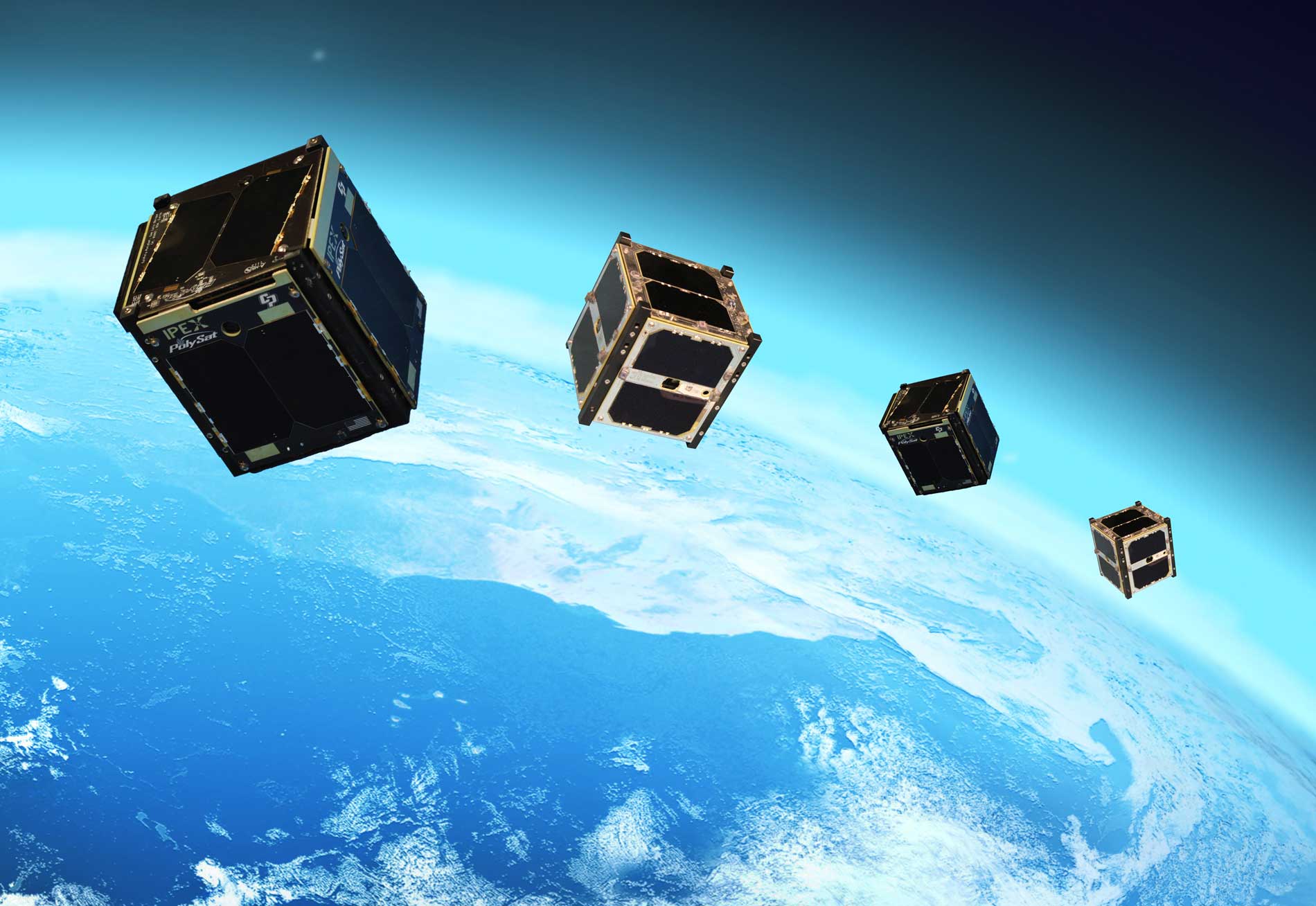
08 Aug 2021 Does Size Matter? The Case for CubeSats
I first heard of CubeSats in 2014, when I did a short course in Space Law & Policy at the London Institute of Space Policy and Law. One of my classmates was working on CubeSats and I was fascinated to learn that it is a tiny satellite that was a small fraction of the size of an orthodox satellite and could be made for a lot less than bigger satellites. Since 2014, CubeSats have gained increasing visibility in the satellite landscape.
According to NASA’s website, CubeSats are “a class of research spacecraft called nanosatellites. The cube-shaped satellites are spacecraft-size un units or Us, typically of up to 12U (a unit is defined as a volume of about 10cm x 10cm x 10cm and typically weight less than 1.33kg.)” Typically, satellites are huge apparatuses whose classifications depend on their respective weights at launch, a/k/a “separated mass”: small satellites (1,200kg and under); medium satellites (1,201-2,500kg); intermediate satellites (2,501-4,200kg); large satellites (4,200-5,400kg); heavy satellites (5,401-7,000kg); and, extra-heavy satellites (7,001kg and above) (Kosiak, 2019, 4). Smaller satellites fall into the following subcategories: Mmini (201-600kg); Micro (11-201); Nano (1.1-10kg); Pico (0.09-1kg); and Femto (0.01-0.10kg). Satellite technology and design improvements have made CubeSats possible.
To understand how disruptive CubeSats are it is instructive to put them into context. The first satellites were small (e.g., Sputnik 1, which marked the beginning of the space race between the US and the then-USSR, and was launched by the then-USSR on October 4, 1957, weighed 184lbs). Satellites have a multiplicity of uses and contexts, from commercial to military to academic. Commercial satellites are used for telecommunications, television broadcasting, space mining and navigation (i.e., GPS). Military and intelligence satellites are used for reconnaissance, communication, satellite, electronic intelligence gathering, weather forecasting, ballistic missile early warning and technology development. Satellites are purpose-built for such purposes as oceanography, meteorology, imaging for climate change tracking, astronomy, flight communications (i.e., inflight WiFi and telephone calls), and can even detect underground water and mineral sources. In April 2020, the Union of Concerned Scientists released their latest update on the number of operational satellites now in orbit around Earth: more than 2000: https://www.ucsusa.org/resources/satellite-database. This number will surely increase as Starlink and other CubeSat players up the ante.
Historically, satellites have been extremely costly to develop and build and, consequently, were only available to well-funded government corporations and agencies. The development of the CubeSat in the late 1990s by two professors – Jordi Puig-Suari of Polytechnic State University and Bob Twiggs of Stanford University – heralded a new chapter in the Space Age concomitant with the advent of “New Space”, or the era of commercialization of space. Indeed, the industry of “space” is growing rapidly in large part because of SmallSats and CubeSats.
CubeSats may well herald the democratization of space by making satellite development more affordable and accessible to “ordinary people”. While standard satellites can take anywhere from five to 15 years and cost several hundred millions of dollars to develop and build, CubeSats are considerably cheaper (think tens of thousands, not hundreds of millions), are versatile and more affordable than bigger satellites. So accessible are CubeSats that According to NASA that Smallsats and CubeSats form a satellite “revolution” thanks to the evolution of technology (e.g., small, powerful, off-the-shelf processors that use relatively low electricity). CubeSats are small: a 4-inch cube with a mass of less than 2.93lbs (although more complex missions may call for two, three or six cubes).
NASA has fostered the development and launch of CubeSats with various programs such as the “CubeSat launch Initiative” (CSLI), which facilitates the inclusion of small satellite payloads build by universities, high schools and non-profit organizations to fly on upcoming launches. CSLI provides developers with low-cost opportunities to run experiments in science, exploration, technology development, education or operations.
CubeSats tend to be purpose-specific and are used in a multiplicity of disciplines – from the pre-lunar missions to military and intelligence uses to global Internet connectivity initiatives like those sponsored by OneWeb, Elon Musk’s “megaconstellation of thousands of satellites” that comprise Starlink as well as other players in the space “space”.
Picture on NASA website: https://www.jpl.nasa.

